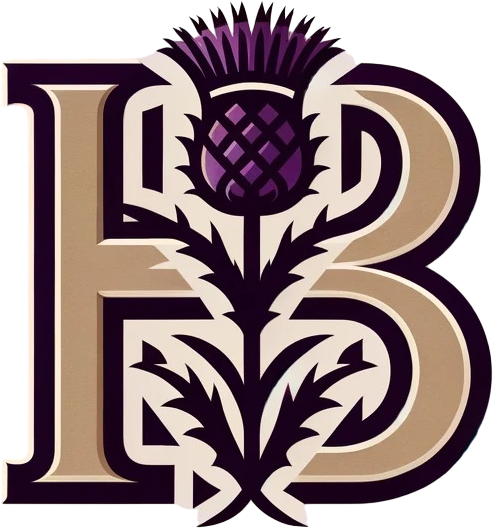AI Designer Bookbinding, seems like a very strange topic… however, we were talking around the proverbial water cooler, well, more accurately a pot of paste and a Scharf-Fix Paring Machine wondered ‘What could AI ever do for us?’
Not really having a clue, we asked Chatgpt4 what AI could do for designer bookbinding! If that was not enough lunacy, we also asked it from some innovative designs in the style of Scottish designer bookbinders… So, for the avoidance of any doubt, all the images on this page and the text below is AI generated. I don’t think we need worry, just yet!

“AI Designer Bookbinding: The Future of Artisanal Excellence”
The advent of Artificial Intelligence (AI) in the realm of designer bookbinding is not just a trend; it’s a transformative movement. This blog post delves into how AI is reshaping the artisanal landscape of designer bookbinding, offering insights into potential benefits, challenges, and future prospects. It’s a journey into a world where technology meets tradition, creating a new narrative for ‘AI Designer Bookbinding’.
 AI: A New Ally for Artisans
AI: A New Ally for Artisans
In designer bookbinding, an industry revered for its meticulous craftsmanship, AI emerges as a powerful ally. With machine learning and algorithmic design, AI can assist artisans in creating intricate, complex patterns and textures that would be challenging or time-consuming to achieve manually. AI’s analytical capabilities enable the customization of designs to a client’s specific preferences, adding a new dimension to the personalization that is at the heart of designer bookbinding.
Preserving Tradition, Embracing Innovation
One of the most significant aspects of AI in designer bookbinding is its potential to preserve traditional techniques while innovating. AI can digitally archive historical binding methods and designs, ensuring that these age-old practices are not lost to time. Concurrently, AI’s predictive modeling can help artisans experiment with materials and binding styles, leading to the creation of avant-garde designs that respect tradition yet break new ground.
 Balancing Art and Technology
Balancing Art and Technology
The integration of AI in designer bookbinding also brings challenges, primarily in maintaining the balance between technological efficiency and the essence of handcrafted artistry. As AI takes on more of the repetitive tasks, artisans have the opportunity to focus more on creative aspects, though this shift may require new skills and adaptation to changing roles.
The Future of AI in Bookbinding
The future of ‘AI Designer Bookbinding’ is ripe with possibilities. We might see AI-enabled tools that provide real-time feedback to artisans on design and structural integrity, or AI systems that collaborate with artisans in real-time, blending their insights with algorithmic precision. Moreover, AI could revolutionize the way we interact with books, introducing sensory elements or responsive designs that change over time.
Conclusion
‘AI Designer Bookbinding’ marks the beginning of a new chapter in the history of bookbinding, where the boundaries between technology and traditional craftsmanship blur. This integration promises to enhance the artistic scope, efficiency, and personalization of bookbinding, making it an exciting time for both artisans and book lovers. As we look to the future, AI stands to redefine the very essence of designer bookbinding, making it more dynamic, responsive, and innovative than ever before.


